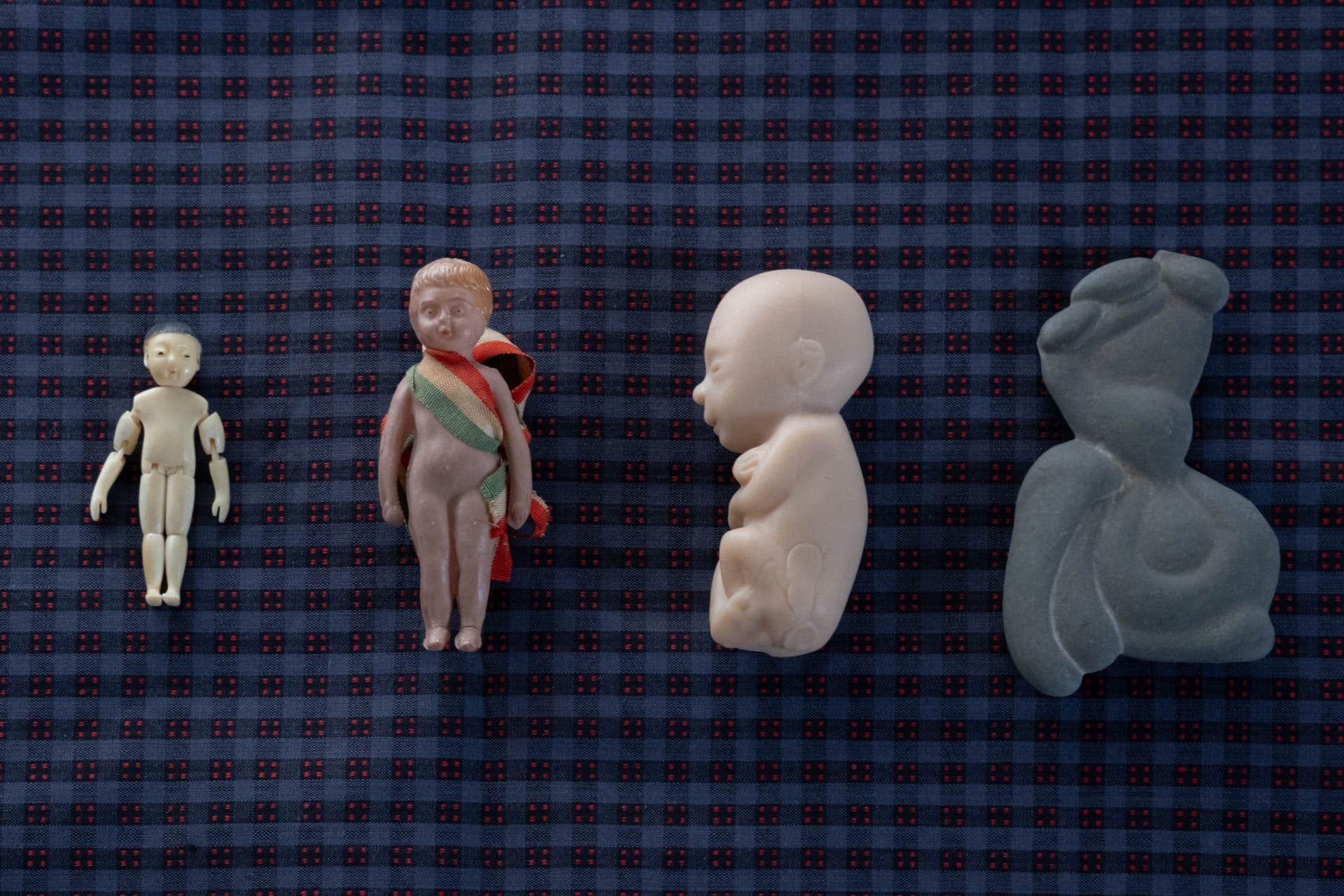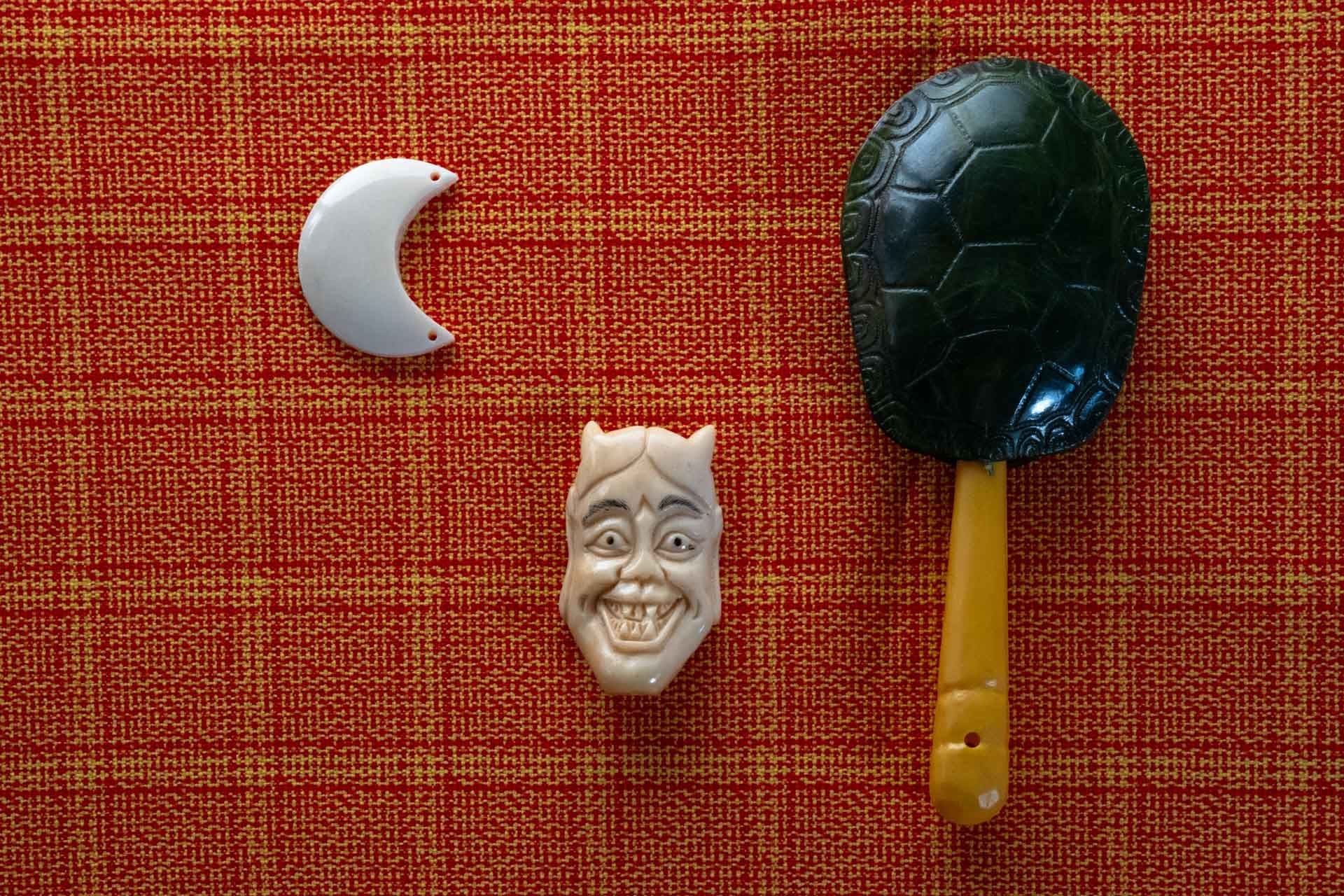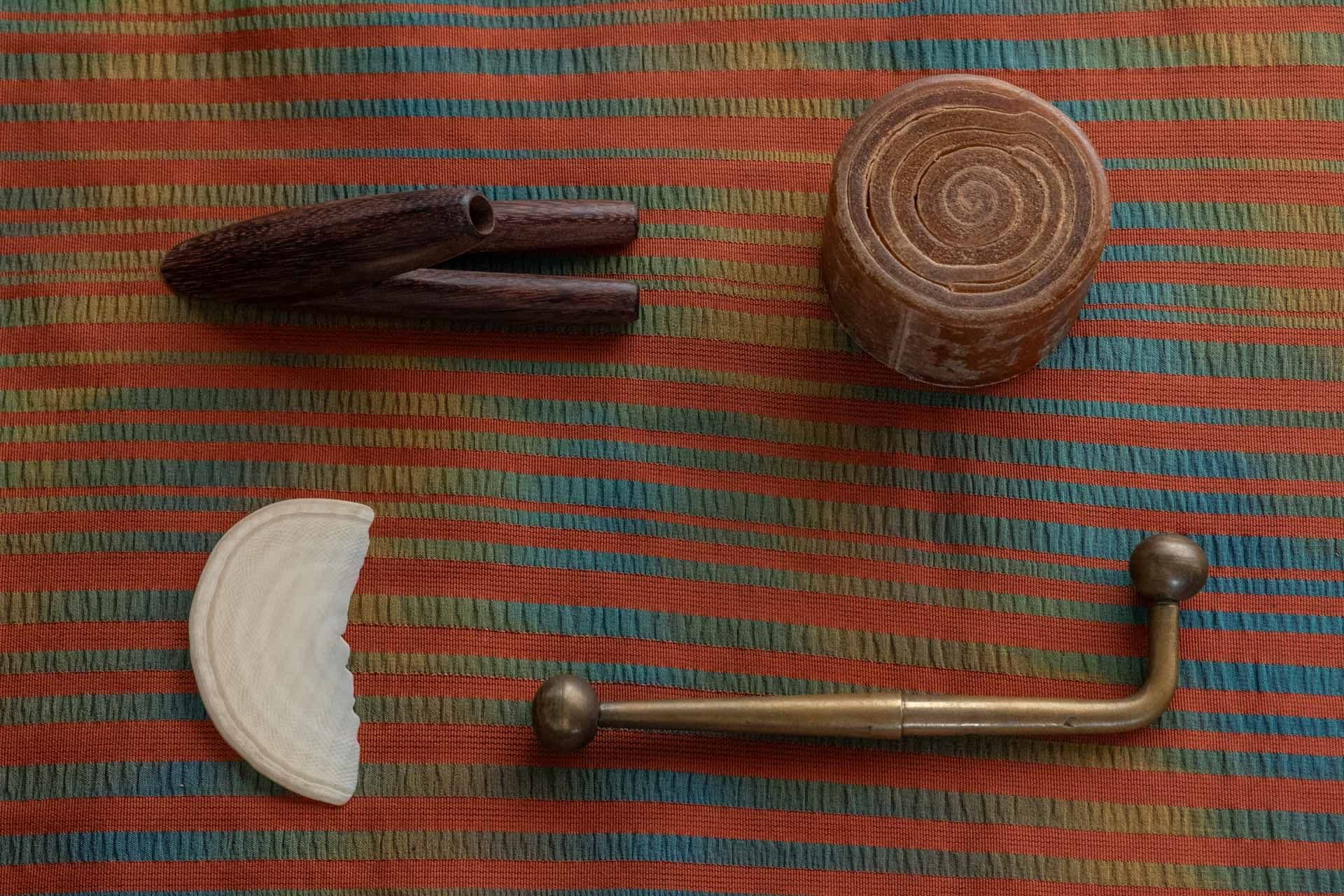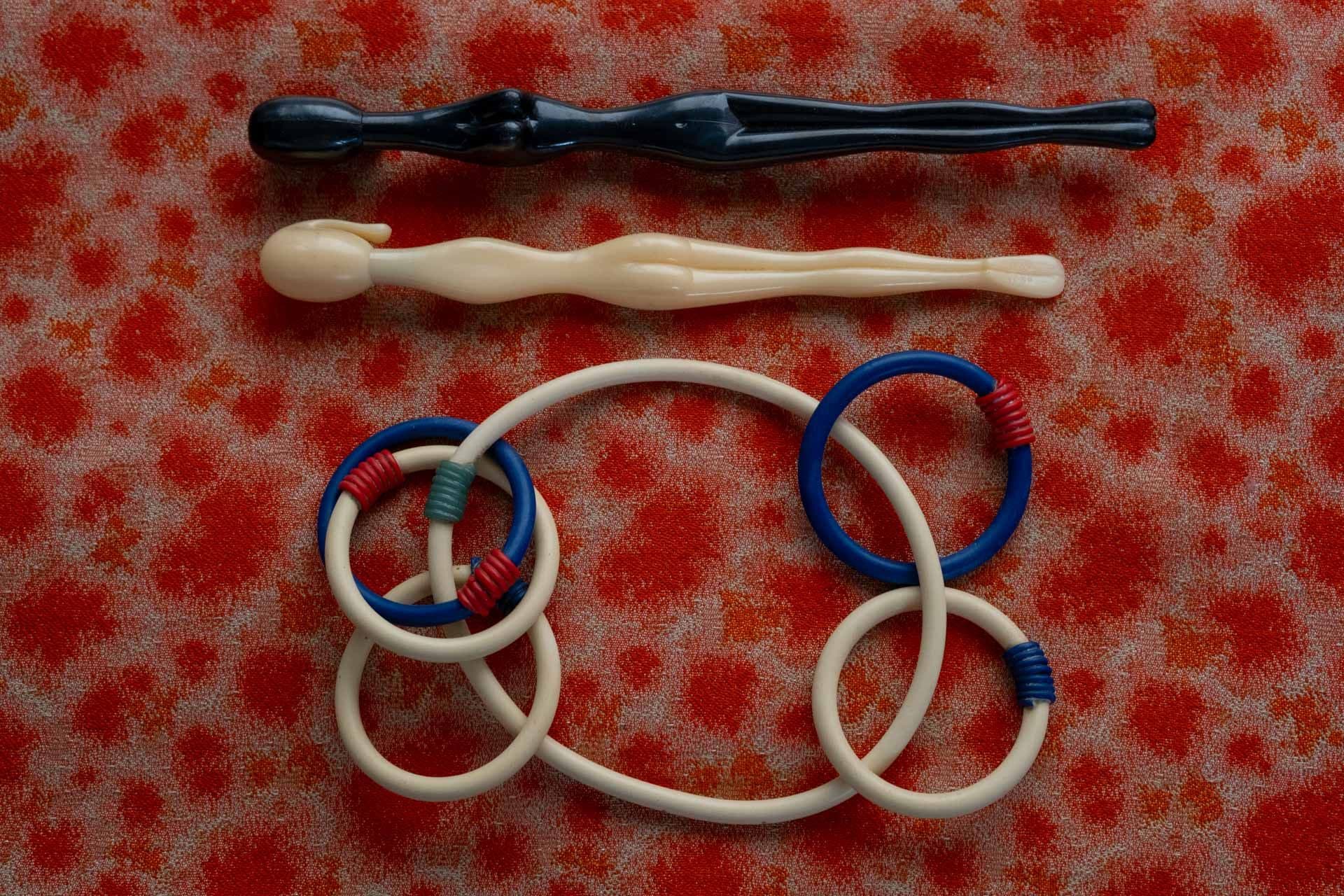Visual Essay
Naoki Sutter-Shudo creates sculptures that often resemble functional objects, though they serve no practical purpose. Instead, the Paris-born artist's work is rooted in assemblage—an approach that reflects his nature as a collector. Based in Los Angeles, where he co-directs both Bel Ami gallery and Holoholo Books, Sutter-Shudo has developed a practice that transforms everyday trinkets and found objects into intimate, stage-like compositions that reward careful observation. In a recent phone conversation from Paris, where he had just opened an exhibition at Galerie Crèvecœur, the artist discussed this series of photographs created for this contribution, assembling objects from his archive, and the contemplative worlds he constructs from collected materials.
Naoki Sutter Shudo (1990, Paris) resides in Los Angeles. His visual art is represented by Derosia (New York), Crèvecœur (Paris), XYZ Collective (Tokyo). He is in a musical group called Odette.
All images courtesy the artist.
I work with free association of shapes. There is no theory or principle guiding the way these images are constructed. It is instinctive. Maybe a little scenery emerges from the setup. And of course, each object has an origin, but when arranged, they become another thing.

These pictures work on a small scale, almost as if they are cataloguing things. It is about the object and the resulting picture. I also like taking pictures of buildings and landscapes, and some landscapes or some buildings are very appealing. They have a strong pull that makes you want to take a picture—and everyone does that. Some things have immediate appeal to become an image. I don’t necessarily seek them out, but sometimes things fall into my hands as gifts or objects I find, and I used to incorporate found objects in my sculptures, much more than I do now.

At the show I opened at Crèvecœur in Paris, someone told me that my sculptures almost looked functional, which they are not, but they could be, for a different body that is not human. A lot of the objects in these photos are old things which used to serve a purpose that is lost to us, like specific tools, or things that were made with different materials than mass-produced objects today. In one of the photos, there is a piece that looks like an ogre’s face, next to it there is something that looks like a tree, and with the crescent moon on the other side, it appears like a landscape. But the tree is actually an old bakelite rattle for babies, in the shape of a tortoise shell.

I don’t know if collecting to me is about nostalgia or about preserving. Sometimes I’ll find something that someone is throwing out, and I have a hard time not picking it up, because I feel bad for the object, as if it was alive.

When I arrange at least three objects, it affects the meaning. It becomes like a stage design, a scene, but there is not necessarily a narrative. Instead of actors, there are these elements, and the story hasn’t started yet. It is like the setup of a joke, but there is no punchline.

One thing I think is essential to sculpture is the relationship of parts to a whole, and the balance between those parts. A successful sculpture is one that has a certain type of order and internal logic that feels right when you see it. And I have this almost mystical belief that when things are arranged a certain way, they can’t be set up otherwise. Maybe that is how things gain power or value.
Visual Essay
finanziato dall'Unione Europea - Next Generation EU